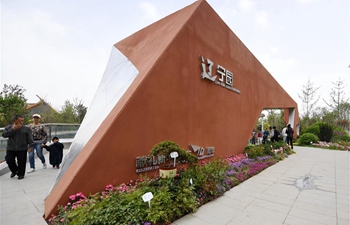SYDNEY, May 21 (Xinhua) -- A number of the world's top scientists met in the Australian city of Melbourne this week for the 10th annual International Particle Accelerator Conference, taking place from Sunday until Friday.
Discussions at the conference will range from applied sciences like materials engineering, space science, and medical applications, to leading edge research into nuclear and high energy physics.
On a practical level the conference will focus on the building and operating of particle accelerators to make them more compact and accessible for widespread medical benefit, as well as for large scale accelerators to continue pushing the frontiers of energy and intensity.
Hosted by Australia's Nuclear Science and Technology Organisation (ANSTO), the conference involves around 1,200 delegates from over 30 countries and regions, with the largest representation coming from the United States and China.
The world's biggest and most well known particle accelerator is the Large Hadron Collider (LHC) in Europe, which made global news for its use in discovering the Higgs Boson, or "God" particle.
The technology, which involves propelling particles such as protons and electrons to very high speeds and energies, has a range of applications from industrial uses to medical treatment.
"There are various kinds and sizes of accelerator, they come either as linear so just in a straight line, or circular accelerators," Group Executive for Science and Technology at ANSTO, Dr Simone Richter told Xinhua.
In the medical field, particle accelerators are commonly used in isotope production for creating nuclear medicine and therapeutics, as well as the treatment of cancer through irradiating tumours.
While the technology has been around since the sixties, it became more mainstream following successful irradiation treatments that took place in the late 1990s and early 2000s.
"There are a couple of experiments running that look into the fundamentals of the basic theory of elementary particles," Richter said.
"It's really looking into the areas of physics which opens doors to new kinds of understanding where we expect the next push to occur in what we call supersymmetry or dark matter," she added.













